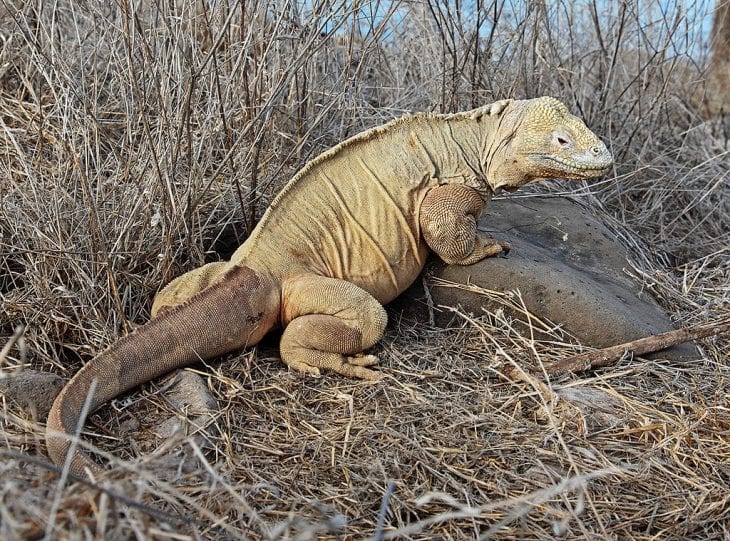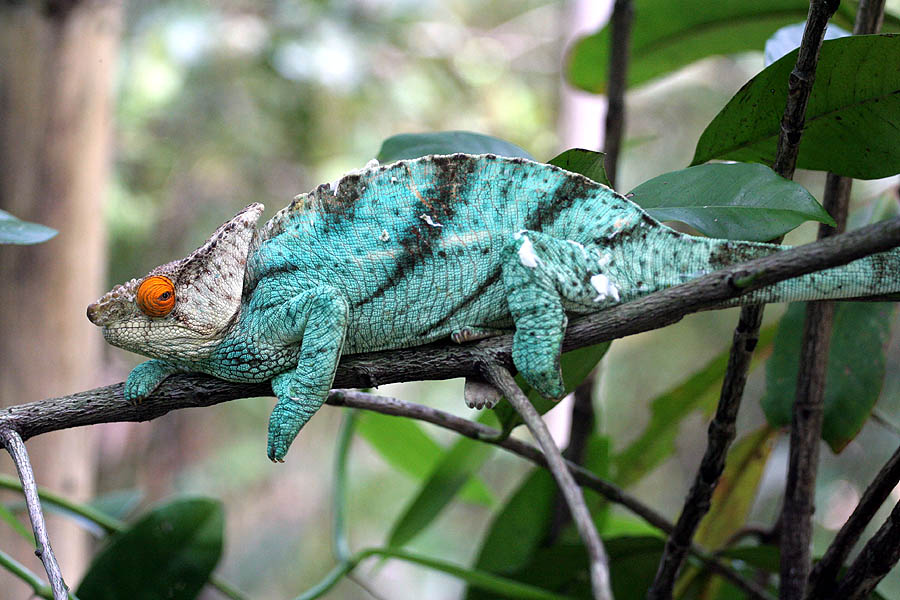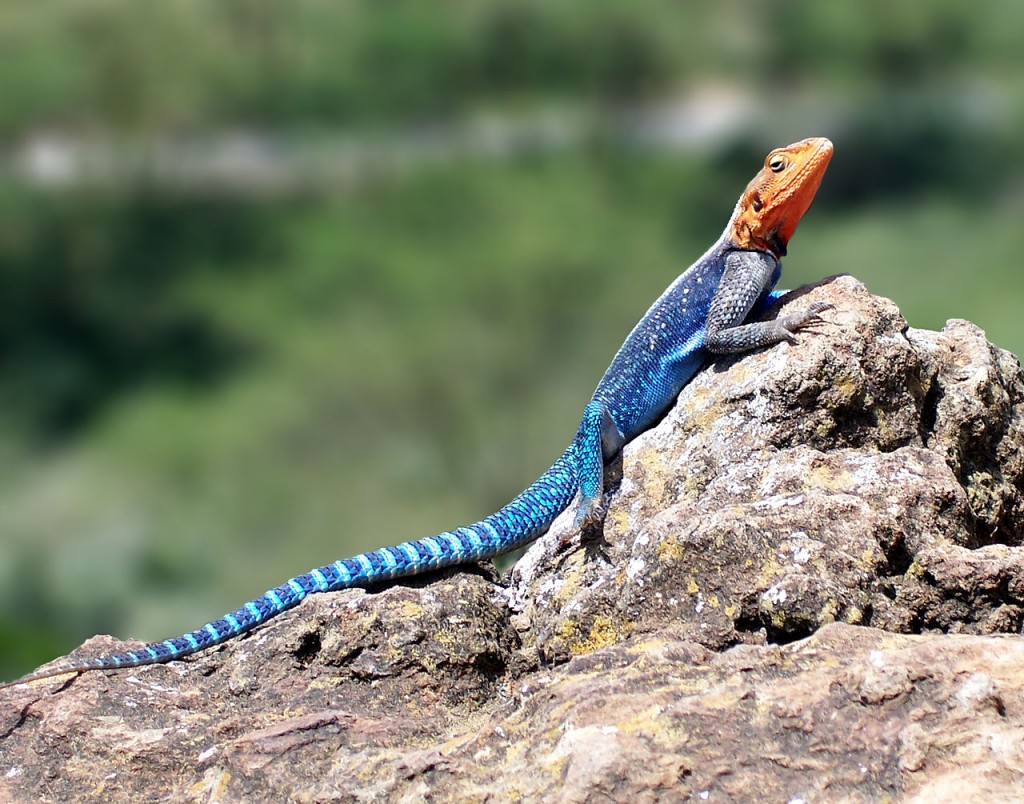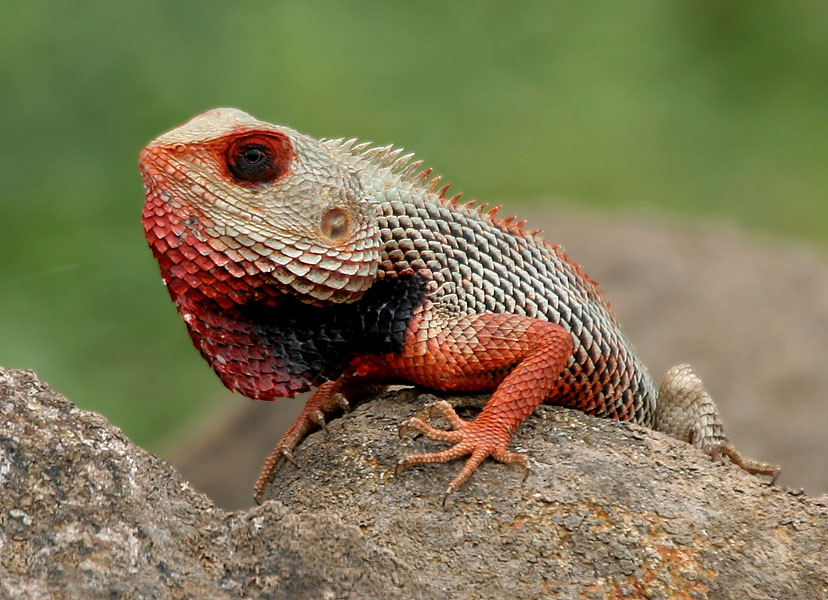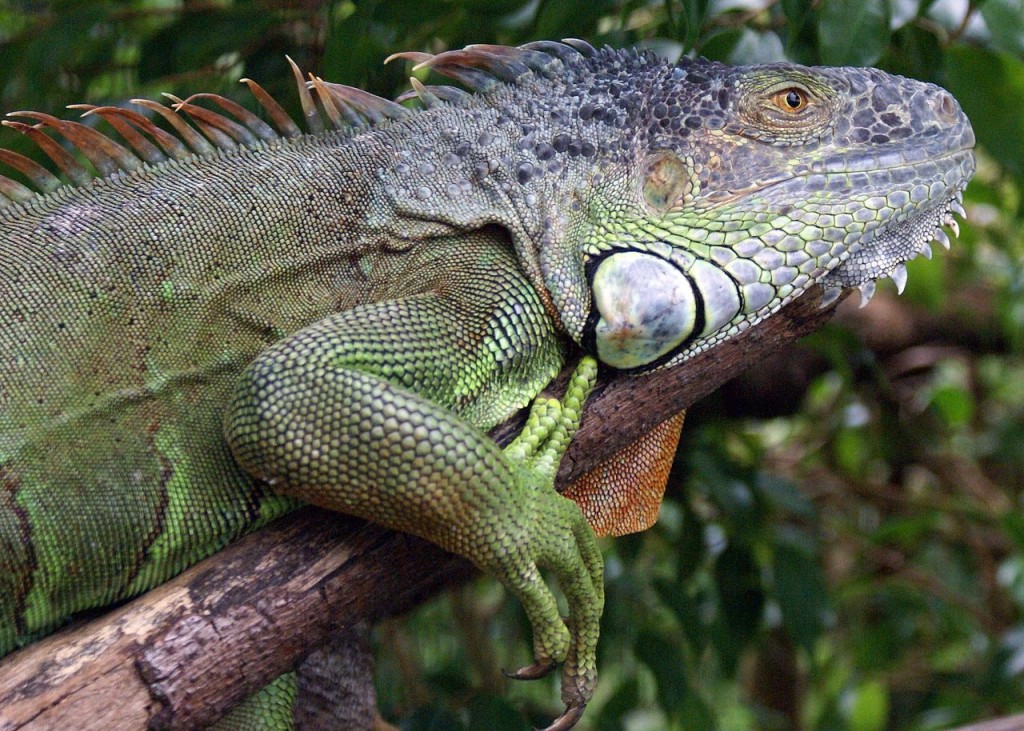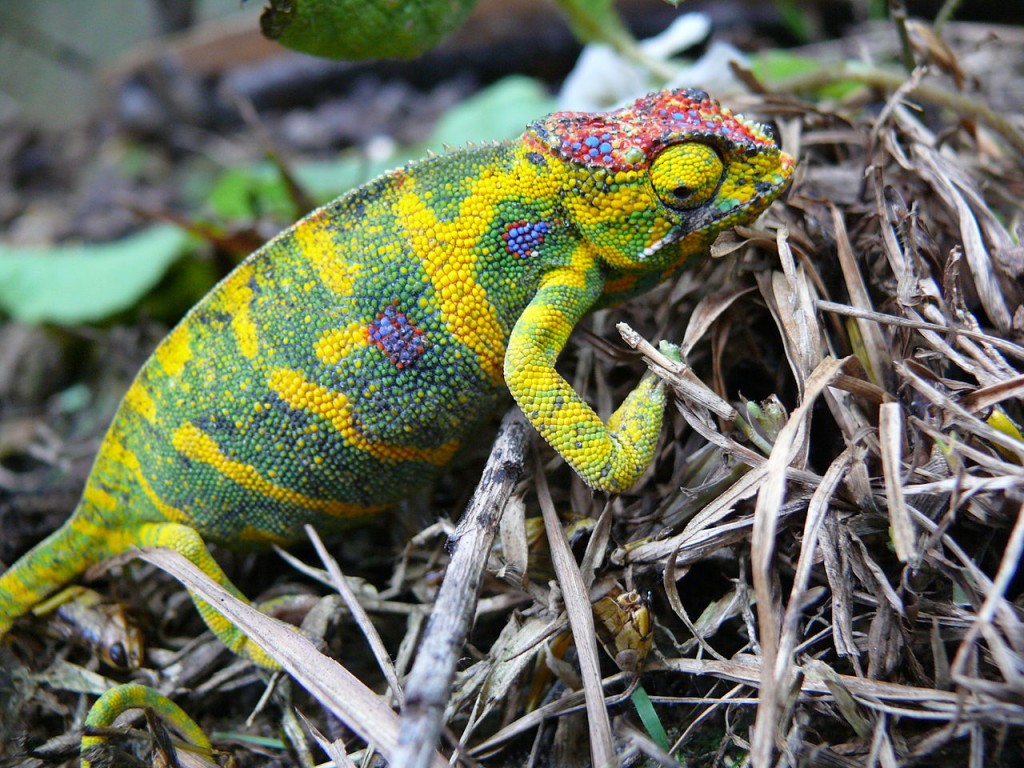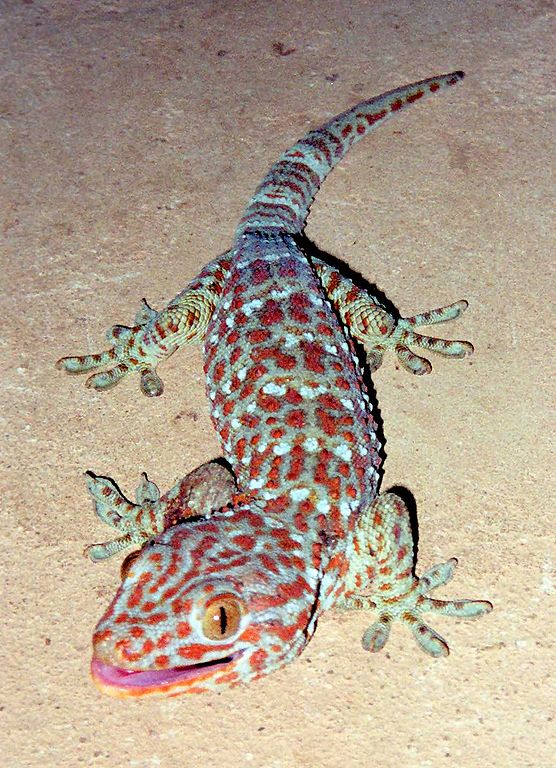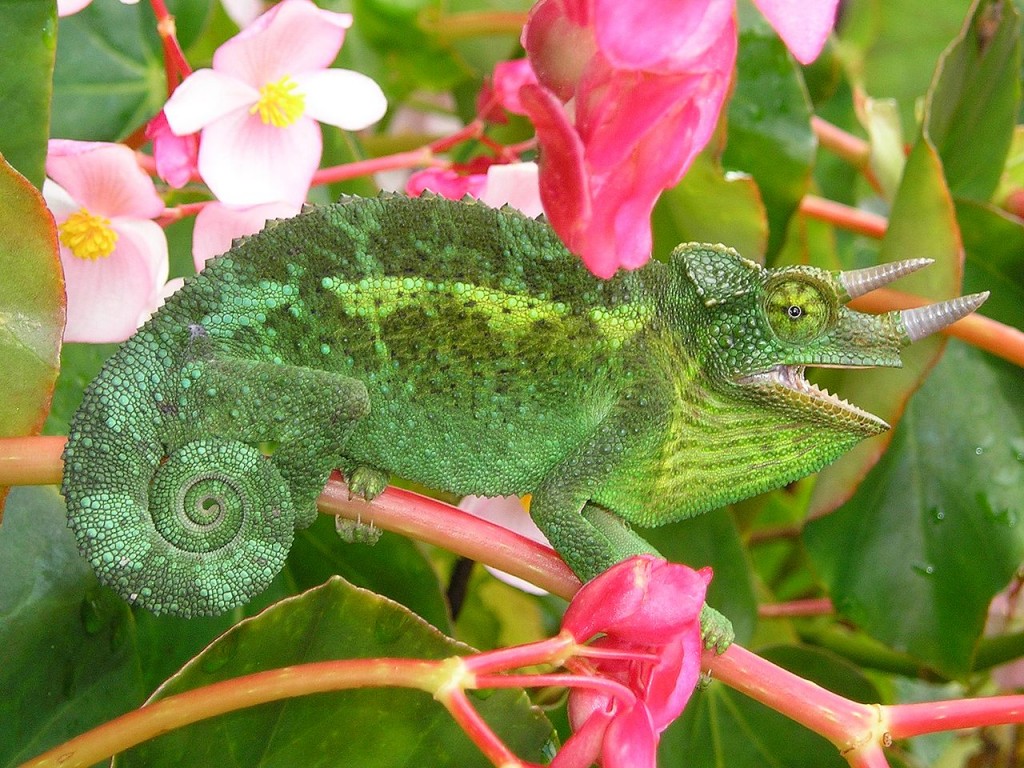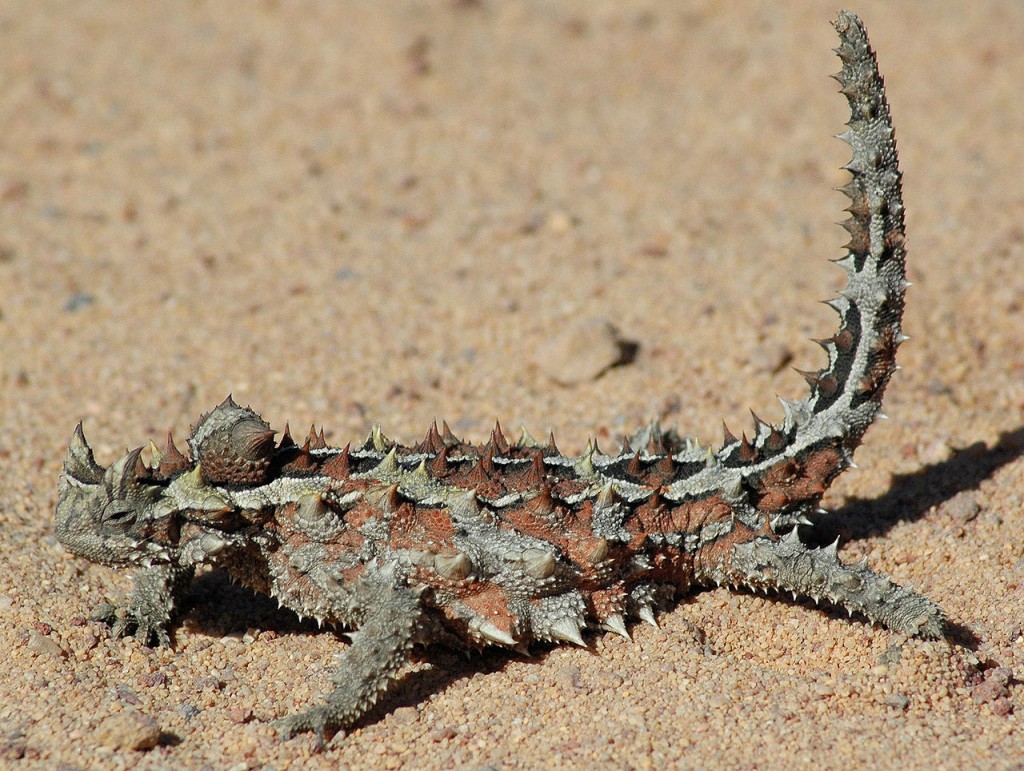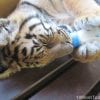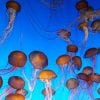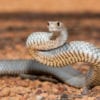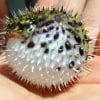1. Galapagos Land Iguana (Conolophus subcristatus)
A species of lizard that is endemic to the Galápagos Islands. It is estimated that 5,000 – 10,000 land iguanas are found in the Galapagos. In the past, their population was so big that Charles Darwin remarked that “…when we were left at James [Island], we could not for some time find a spot free from their burrows on which to pitch our single tent”. He then continued to describe the Galapagos Land Iguanas as “ugly animals, of a yellowish orange beneath, and of a brownish-red color above: from their low facial angle they have a singularly stupid appearance”. They grow to a length of 1-1.5 meters (3-5 feet) and weigh 11 kg (25 pounds). It is estimated that they have a life span of 50-60 years.
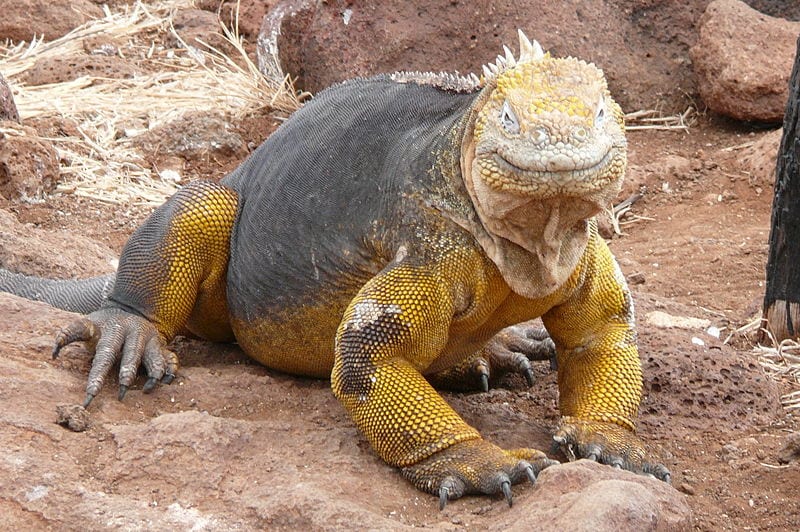
Coolest Lizards In The World: Galapagos Land Iguana (source: Haplochromis)
2. Parson’s Chameleon (Calumma parsonii)
A very large species of chameleon that is endemic to forests in eastern and northern Madagascar. They reach up to 68 cm (27 in) in length.
3. Red-headed Rock Agama (Agama agama)
Found in most of Subsaharan Africa, it can often be seen in the heat of the day on rocks or walls. In the breeding season, the males develop amazing colorful markings: the head, neck and tail turn bright orange, and the body turns dark blue. Outside of the breeding season, the male is plain brown. Its primary source of food is insects.
4. Oriental Garden Lizard (Calotes versicolor)
Found widely distributed in Asia. During the breeding season, the male gets a bright red throat which led to a common but incorrect name of “Bloodsucker”. In reality, the Oriental Garden Lizard eat mainly insects.
5. Green Iguana (Iguana iguana)
The Green Iguana, or simply Iguana is a large species of lizard native to Central America, South America, and the Caribbean. It grows to 1.5 meters (4.9 ft) in length from head to tail, with bodyweights upward of 20 pounds (9.1 kg).
6. Lesser Chameleon (Furcifer minor)
The Lesser chameleon is a species of lizard in the Chamaeleonidae family, endemic to Madagascar island. This species is endangered by its habitat loss.
[put_links_units_468_15]
7. Tokay gecko (Gekko gecko)
A gecko native to large parts of Asia. Its habitat is rainforest trees and cliffs but they can be found around humans too, on walls and ceilings. The Tokay Gecko is the second largest Gecko species, attaining lengths of about 11–20 inches (28–51 cm) for males, and 7–19 inches (18–48 cm) for females, with weights of only 150–400 grams (5.3–14 oz). They are distinctive in appearance, with a bluish or grayish body, sporting spots ranging from light yellow to bright red.
8. Jackson’s chameleon (Trioceros jacksonii)
An African chameleon first discovered in 1896. They are sometimes called three-horned chameleons because males possess three brown horns: one on the nose and one above each eye. Their color is light green but like all chameleons, they can change color quickly. An adult size is 12 inches (30 cm) and they eat mainly small insects.
9. Panther Chameleon (Furcifer pardalis)
Found in the eastern and northern parts of Madagascar. Male Panther chameleons grow to a typical length of 17 in (45 cm). Females are about half that size.
10. Thorny dragon (Moloch horridus)
An Australian lizard that grows up to 20 cm (8.0 in) in length, and can live up to 20 years. Most of these dragons are colored in camouflaging shades of brown and grey. They are covered entirely with conical spines and also have a spiny fake head on the back of its neck. They present the “fake head” to potential predators by dipping their real head.

